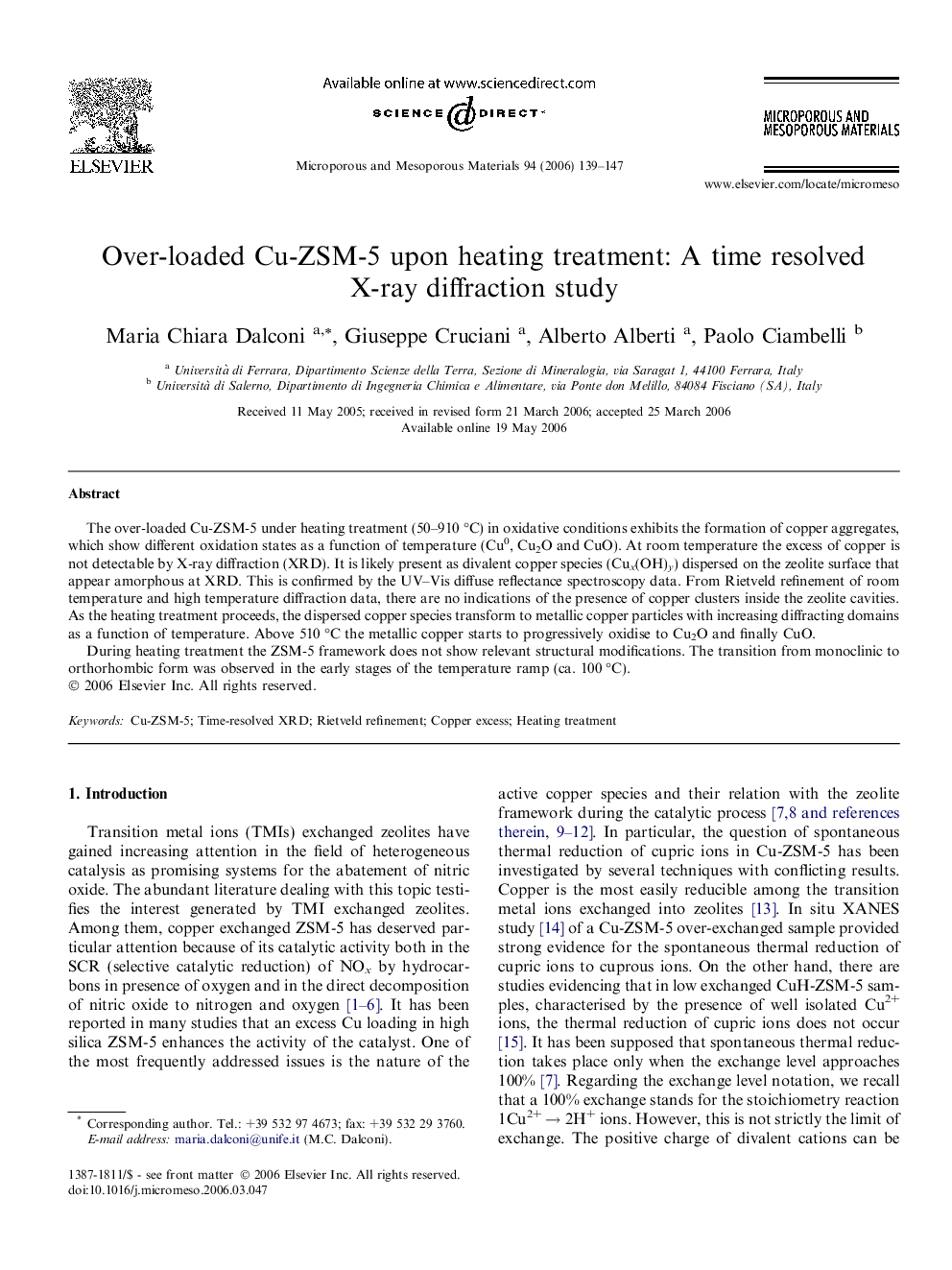| Article ID | Journal | Published Year | Pages | File Type |
|---|---|---|---|---|
| 77300 | Microporous and Mesoporous Materials | 2006 | 9 Pages |
The over-loaded Cu-ZSM-5 under heating treatment (50–910 °C) in oxidative conditions exhibits the formation of copper aggregates, which show different oxidation states as a function of temperature (Cu0, Cu2O and CuO). At room temperature the excess of copper is not detectable by X-ray diffraction (XRD). It is likely present as divalent copper species (Cux(OH)y) dispersed on the zeolite surface that appear amorphous at XRD. This is confirmed by the UV–Vis diffuse reflectance spectroscopy data. From Rietveld refinement of room temperature and high temperature diffraction data, there are no indications of the presence of copper clusters inside the zeolite cavities. As the heating treatment proceeds, the dispersed copper species transform to metallic copper particles with increasing diffracting domains as a function of temperature. Above 510 °C the metallic copper starts to progressively oxidise to Cu2O and finally CuO.During heating treatment the ZSM-5 framework does not show relevant structural modifications. The transition from monoclinic to orthorhombic form was observed in the early stages of the temperature ramp (ca. 100 °C).
